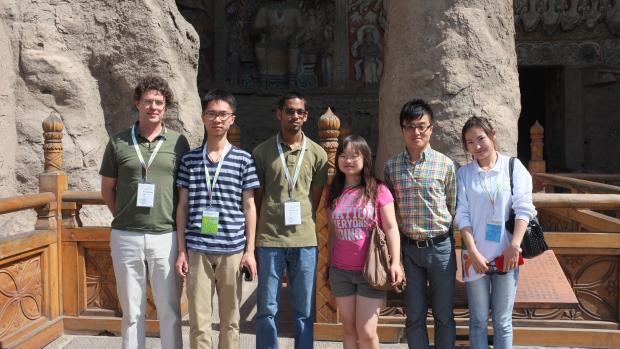NYU-Poly Competes in US Department of Energy’s Biennial Solar Decathlon

August 2013 will see participants in the US Department of Energy’s biennial Solar Decathlon, a program that challenges college students around the world to design, build and operate solar-powered houses that are cost-effective, attractive and energy efficient.
The competition aims to promote cross-disciplinary collaboration between institutions and facilitate innovation in energy efficient design and solar power. The resulting homes, built solely by students, will demonstrate that solar-powered houses can be fully functional, comfortable and sustainable living spaces. During the competition, homes are judged by their ability to conserve resources, control the physical environment and be fully energy efficient, running only on solar energy.
Polytechnic University of New York University (NYU-Poly) students were awarded a grant by the USDOE to participate in partnership with Ghent University in Belgium and with Worcester Polytechnic Institute, MA, in a joint effort to design and construct an energy-efficient house. Each school has been assigned specific responsibilities. NYU-Poly has been charged with the structural design of the home and the effective use of building materials to increase its energy efficiency. The students from Ghent are in charge of the architectural design and detailing; the WPI students are in charge of heating ventilation and cooling, including photovoltaic power generation. Students from the three universities work closely together and with industry partners in the U.S.
“The idea of working on a house that’s kind of futuristic and [uses] zero energy really appealed to me,” said NYU-Poly team member Javed Narain.
Masoud Ghandehari, associate professor in the department of Civil and Urban Engineering at NYU-Poly, is one of the faculty advisors. “Although the competition will take place in August, not demanding too much heating power, the home is designed for the northeast U.S.,” he said. “Meanwhile the idea is for the students to sell this house at the end and recoup all the investment that’s been pumped into it.” Ghandehari adds, “helping students from three different universities to work on a common goal is also great education.”
Engineering for Success
Building codes dictate very specific details in their comfort criteria, even relative humidity. To meet these codes, the team will employ cutting-edge science to solve certain problems. One such innovative approach involves using phase change materials as an additive to concrete; these materials absorb heat and later release it when the temperature drops below a certain point.
“It’s like a thermostat,” Ghandehari explained.
Dubbed “Solatrium” by the Belgium, Massachusetts and New York partners, Team BEMANY’s design incorporates passive design in lieu of an active integration home energy system. The materials being used in the floor tiles, walls, countertops and other areas will allow the house to use less energy throughout its heating and cooling cycles.
 Photovoltaic panels mounted on the roof will provide energy for heating, cooling, standard appliances, light fixtures and wall outlets. Architecturally, the design is a mix of an Asian style country home with a central atrium indoor garden that will provide its occupants with the sensation of coexisting with nature, providing natural light to the center of the square building.
Photovoltaic panels mounted on the roof will provide energy for heating, cooling, standard appliances, light fixtures and wall outlets. Architecturally, the design is a mix of an Asian style country home with a central atrium indoor garden that will provide its occupants with the sensation of coexisting with nature, providing natural light to the center of the square building.
The 2013 competition will take place in China’s Datong Xian province. China joined the Decathlon as part of an agreement in early 2011 between the US Department of Energy and China’s National Energy Administration. As a result of this agreement, SD2013 will be organized and hosted jointly by members of China’s academic sector, government and industry.
The team will visit China twice in the upcoming months, once to tour the build site and another for the actual competition next August, where students will have 40 days to build and show their homes. It’s an exciting prospect for team members. As Narain puts it, “working in China is a once-in-a-lifetime opportunity.”
Additional NYU-Poly student participants include Enrico Tomassoli from university of Perugia, Italy, here as a research associate; Engui Liu, a PhD student; Jingyi Tang, an Undergraduate student from China on a dual degree program; Evan Wilke undergraduate student and NYU-Poly team leader; and Weihua Jin, industry professor in the department of Civil and Urban Engineering. The team has been diligently planning the necessary steps for a submittal schedule as requested by the competition operators.
A small group from the team representing all three schools visited Datong, China, last Memorial Day weekend to survey the building site and discuss competition logistics with their hosts. During their stay, the mayor of Datong, a city of over 10 million people, arranged a private showing of a traditional Chinese opera for the attending competitors from all 23 participating teams.
“When we were there, they actually stopped traffic for us when we were going from point A to point B on various occasions,” said Evan Wilke. “The entire city, like 10 million people… just stopped traffic! They had police officers at every single intersection and we just went. Pretty incredible.”




